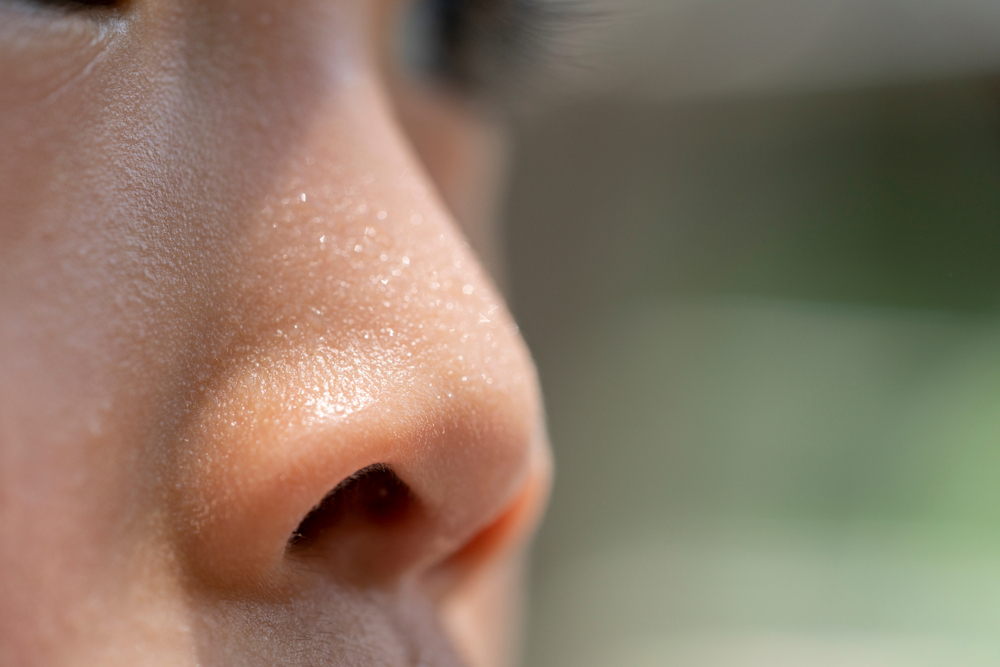
If you’re wondering how to fix a collapsed nostril, you probably already know the answer isn’t as simple as taking an OTC decongestant or allergy medication, because it’s often caused by weakened nasal cartilage in the lateral (side) walls of your nose. For those struggling with nasal valve collapse, we empathize with you and have a few treatment options available to improve your breathing and quality of life.
Dr. Kaplan is currently one of the few ENTs who offer the innovative, LATERA implants in the Houston area along with balloon sinuplasty and reconstruction surgeries.
What is a nasal valve collapse?
The nasal valve is located in the middle to the lower part of the nose. It is extremely narrow and primarily serves to limit airflow. Nasal valve collapse or a collapsed nostril refers to any weakness or further narrowing of the nasal valve.
What causes a collapsed nostril?
The most common cause of a collapsed nostril is a septum deviation from trauma to the nose, but it can also be a genetic structure of the nose issue or the result of nasal reconstruction.
This collapse can occur on one or both sides of the nose and can cause a minor restriction or a complete blockage. Either way, it’s not something that goes away on its own and will need to be treated by an experienced ENT.
How do I know If it’s a collapsed nostril or allergies?
One of the most common sinus issues in our region is congestion from allergies. Therefore, the first step in treating a collapsed nostril is often to rule out allergies as an alternative cause
Common allergy symptoms include:
- Itchy or watery eyes
- Scratchy throat
- Responds to medication
- Is worse outside
- Comes and goes
If you experience a collapsed nostril independent of these common allergy symptoms, you may need to seek more specific treatment.
Signs of a collapsed nostril
If you can’t breathe through your nose and have had some sort of trauma to the nose, including a reconstructive or nasal surgery, it’s most likely a collapsed nostril.
Other symptoms of a collapsed include:
- One nostril is smaller than the other
- Breathing issues while sleeping
- Feeling as though your nose is blocked
- It does not respond to medication
- It doesn’t come and go
- Nostril collapse when inhaling
How to fix a collapsed nostril
There are many different surgical techniques available for fixing a collapsed nostril. Dr. Kaplan will help you determine which method is best for you, based on the severity of your nasal collapse and the structure of your nose. Potential treatment options for a collapsed nostril include the LATERA Nasal Implant.
LATERA Nasal Implant
A nasal collapse is a result of a weakened lateral wall in your nose. The LATERA nasal implant adds extra structural support to the upper and lower cartilage of your nose’s lateral walls to relieve the obstruction.
The small, absorbable implant is inserted inside the nasal wall and anchors the maxilla bone, preventing nasal valve collapse and allowing you to breathe freely through your nostrils.
Over 18 months, a fibrous capsule will form around the implant, providing even more stability. Over time this tissue will slowly be replaced naturally by collagen, which helps provide lasting support.
The LATERA nasal implant procedure is effective and less invasive than reconstruction surgery. Dr. Kaplan is proud to be one of the first ENT doctors in the Houston area to provide this helpful treatment to his patients in-office.
Other surgical options to repair a collapsed nostril
Balloon sinuplasty
Balloon sinuplasty in Houston is a good option for those with minimal blockage. This treatment involves inflating a small balloon inside the nasal passage to provide Deviated septum relief. Unlike LATERA nasal implants, balloon sinuplasty does not provide any lasting structural support.
Reconstructive surgery
If your collapsed nostril is a result of plastic surgery, then surgical assistance is often needed to correct the issue. It is the most invasive repair option, often reserved for the most extreme blockages.
Turbinate reduction
Turbinates are natural structures that line the inside of your nose and help warm and humidify air. Enlarged turbinates can block airflow and need to be addressed surgically through turbinate reduction.
See Dr. Kaplan and get relief from your collapsed nostril
Impacted breathing isn’t something you should live with. Our team would love the opportunity to explain how to fix a collapsed nostril, evaluate your condition and provide a range of treatment options, including the innovative LATERA implant.
Schedule an appointment to get help.
More Helpful Articles by Kaplan Sinus Relief:
